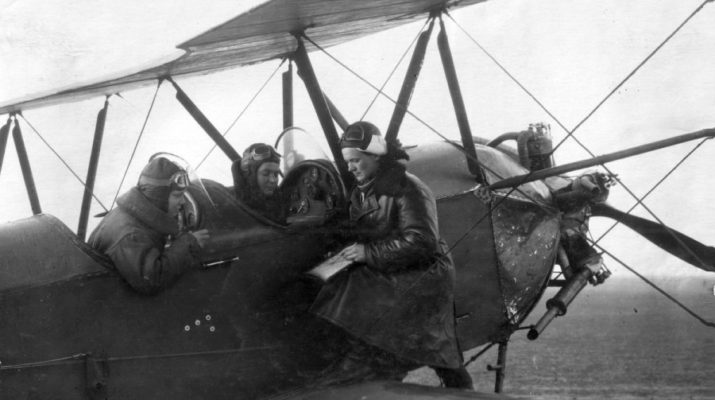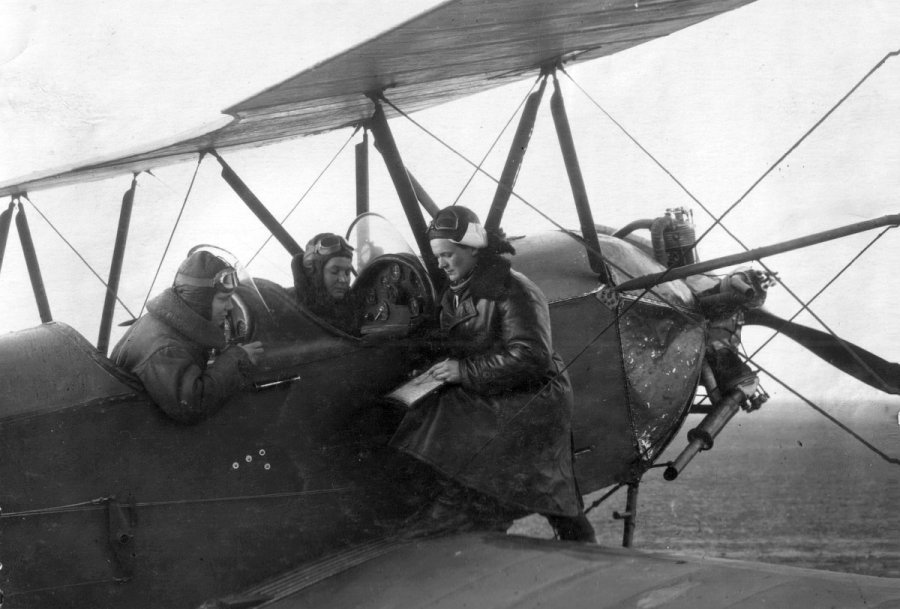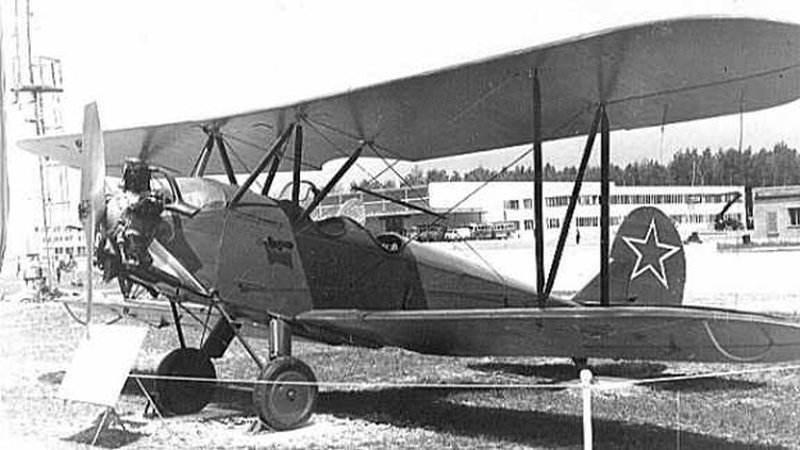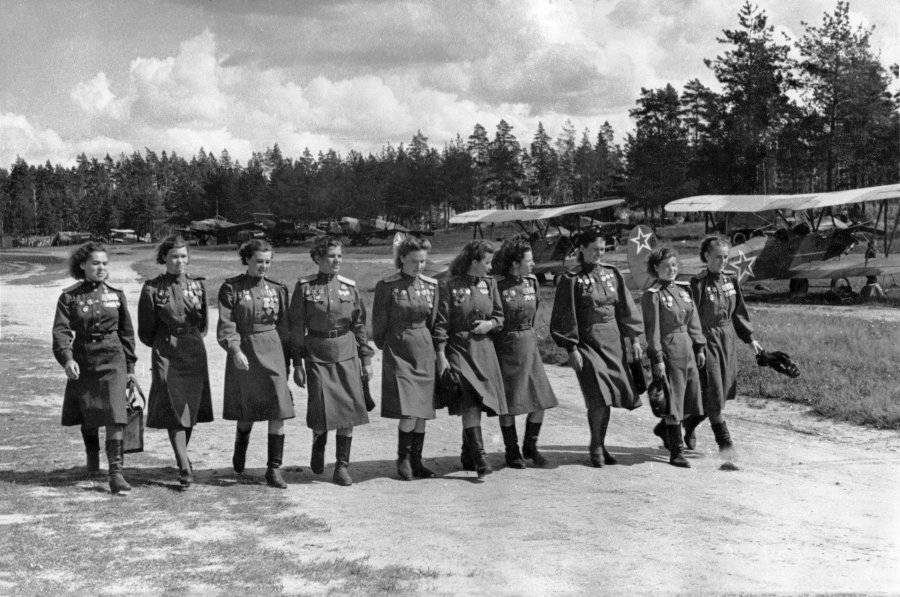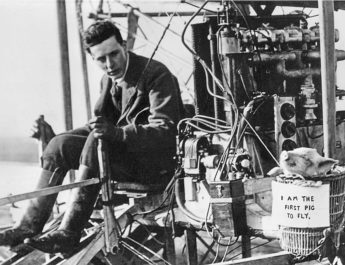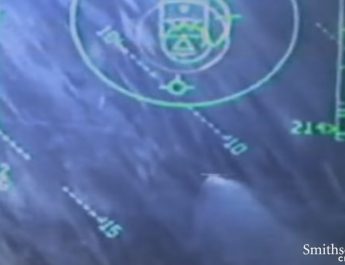During the early stages of II World War, or as it is known in Russia and other ex-USSR countries – “The Great Patriotic War”, the Red Army was overstretched to the breaking point.
The Nazi war machine, along with its fascist allies, overran Kiev and Minsk, besieged Leningrad and Sevastopol, and threatened Moscow itself. In desperate need for new recruits, Soviet High Command decided to include women in the armed forces.
Over 800.000 served in the Red Army during the course of war, with nearly 200.000 being decorated for their achievements. They served as tank drivers, snipers, pilots, machine gunners, communication personnel, military and political officers and medics, with significant number of them also serving behind the enemy lines as partisans.
Besides well-known female war heroes, such as snipers Lyudmila Pavlichenko, Roza Shanina and Nina Lobkovskaya among others, special place in history is reserved for the pilots of the all-female night bomber regiment – the famous Night Witches.
Formed in October 1941 by the orders of the People’s Committee for the Defense of the USSR (НКО СССР), 588th Night Bomber Regiment (588-й ночной легкобомбардировочный авиационный полк) was led by veteran pilot and pre-war decorated Hero of the Soviet Union, Marina Raskova.
What distinguished this from any other air force regiment was the fact that it was all-female one (around 115 personnel, aged 17-22), and that included mechanics, technical personnel and even a political commissar attached to it.
The regiment was sent to the front on May 1942, with first combat mission occurring on 12th of June same year. The airplanes that the female pilots flew were also unusual for the front lines – they were old training Polikarpov Po-2 biplanes, unarmed and more suited for crop dusting, than to provide effective ground support.
Nevertheless, the success achieved by these brave women pilots was undeniable – regiment flew over 23,000 missions, dropping over 3,000 tons of bombs and 26,000 incendiary shells, while becoming the most highly decorated female unit in the Soviet Air Force by the end of the war.
Several factors attributed to the success of the 588th Night Bomber Regiment. First of all, although being unarmed and obsolete, the Po-2 biplanes were perfect for infiltration missions and night raids – the pilots could idle the engine near the target and glide to the bomb release point (they were hand-thrown by the crew), with only wind noise left to reveal their location.
The biplanes could also fly at the tree-top level, where they were hard to see or engage. Additionally, the stall speed of both the Messerschmitt Bf 109 and the Focke-Wulf Fw 190 was similar to the Polikarpov Po-2’s maximum speed, thus making it difficult for the fighters to keep a Po-2 in weapons range for an adequate period of time.
The pilots also didn’t use radio communication, which prevented them for being discovered by signal units. And finally, the daring spirit and high morale of the female pilots attributed to the legends of “Night Witches” (Nachthexen) – called so by Nazis because of the whooshing noise that their wooden planes made, which reminded Germans of a sweeping broom.
Using cover of the darkness, with slow-flying and almost invisible Po-2 biplanes, the “Night Witches” performed precise strikes on sleepy Nazi forces, quickly returning to base after sorties.
The effect for the morale of the enemy was devastating – troops were depraved from the sleep, they were being harassed by the female pilots (which was considered to be additional reason for the shame), and the sound of the slow gliding of the Po-2 directly above their heads became nerve-wrecking.
Rumors quickly started to spread that the Nachthexen were super-human, thanks to the special drugs issued by the Soviet military. One such drug supposedly gave them possibility to “see in the dark” and thus be so much successful in their night raids.
Of course, no such things existed, and the Night Witches were just ordinary female citizens of the Soviet Union. The only thing which made them stand out from their peers was incredibly high amount of bravery each of them possessed. As said before, Polikarpov Po-2’s were unarmed until 1944, which left pilots to defend themselves only with handguns.
Bombs were dropped by the hand, and airplane was made of wood, thus not possessing any degree of protection against AA and small-arms fire. The crew was also without parachutes, opting for additional payload of the bombs in their cockpit instead.
The hatred of the enemy for Night Witches was such, that certain and brutal death was expecting each captured pilot or crew member. Nevertheless, in spite of significant casualties and against all odds, the daring women of 55th Night Bomber Regiment prevailed, and proved to be inspiration for both the people of the Soviet Union during the war, as well as for the future generations in Russia and CIS.
Their legacy can be seen even today, as the decision by the Russian Defense Ministry was made in 2017, to re-introduce the recruitment of female cadets to the Krasnodar Higher Military Aviation School. Thus, in 2022, it is highly likely that the first, post-Soviet Union trained female officers, will demonstrate their flying skills at the Victory Day parade or Air Force Day of the Russian Federation, continuing the honored traditions of their brave ancestors.
Author - Aleksa Filipovic
